The Power of the Dog Costume Designer on Making Kirsten Dunst Look "Wrongly Dressed" and "Awkward" in All the Right Ways
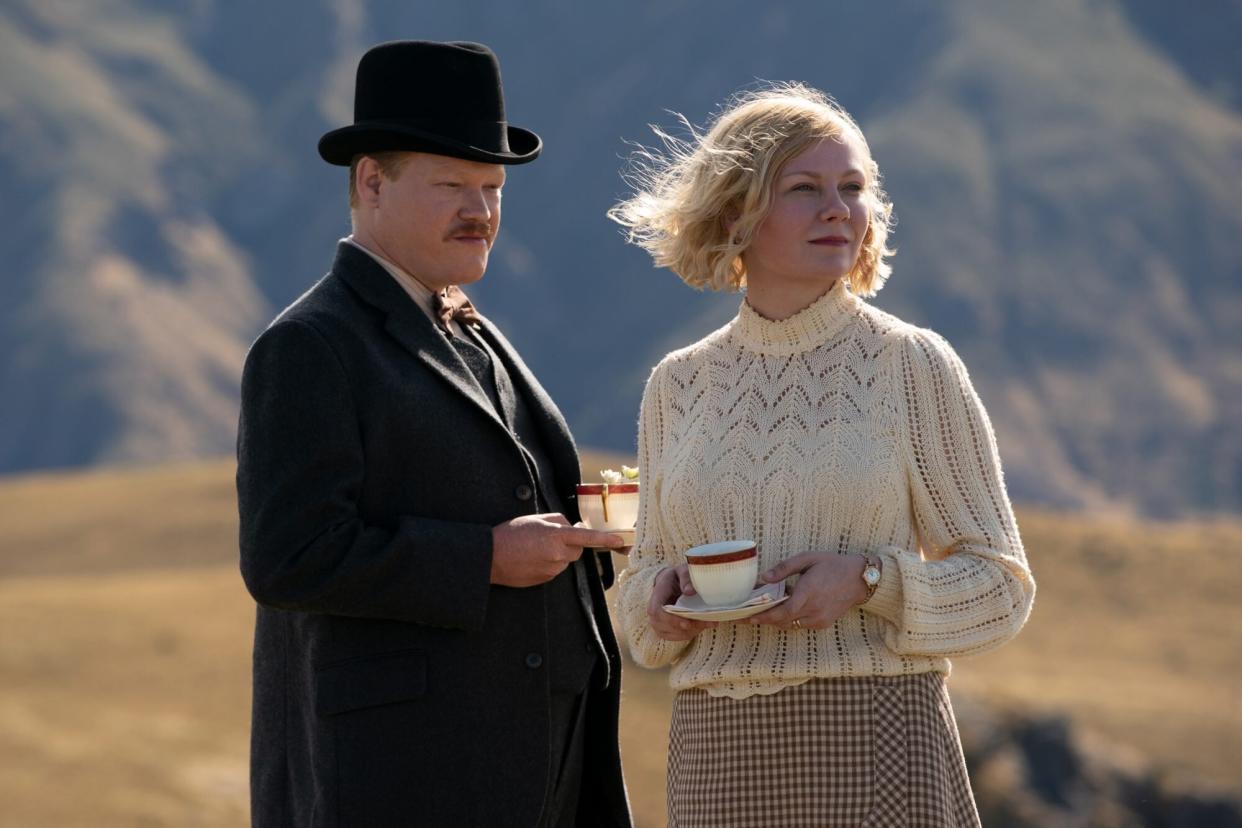
- Oops!Something went wrong.Please try again later.
- Oops!Something went wrong.Please try again later.
- Oops!Something went wrong.Please try again later.
- Oops!Something went wrong.Please try again later.
Netflix
Growing up in New Zealand, Kirsty Cameron was sewing clothes for her dolls by age eight and cleverly crafting a gold PVC jacket for the school disco by her teens. Little did she realize that her love for sewing would one day see her creating costumes for stars like Kirsten Dunst while running the wardrobe department on a film with 12 Oscar nominations. Of course we're talking 2021's powerhouse period piece The Power of the Dog.
Set in 1920s Montana and filmed amid the dazzling landscapes of Central Otago on New Zealand's South Island, the Jane Campion-directed movie has already won Best Film and Best Director at the BAFTAs and Critics' Choice Awards. Dunst, 39, portrays Red Mill restaurant owner Rose, who wins the heart of wealthy rancher George, played by Dunst's fiancé, Jesse Plemons. But after George brings Rose and her son, Peter (Kodi Smit-McPhee), home to the ranch, his menacing brother Phil (Benedict Cumberbatch) taunts the pair.
RELATED: How to Watch the 2022 Oscars — And the Red Carpet Arrivals
Costuming was a taxing but rewarding gig for Cameron, whose interior designer mother, Nanette Cameron, taught her to sew. Cameron has since worked on Whale Rider (winning best costume design at the 2003 New Zealand Film and TV Awards) and the Michael Fassbender western Slow West, as well as writing and directing short films and designing costumes for theater. But she says her work on Power of the Dog (based on the book by Thomas Savage) will remain a career highlight.
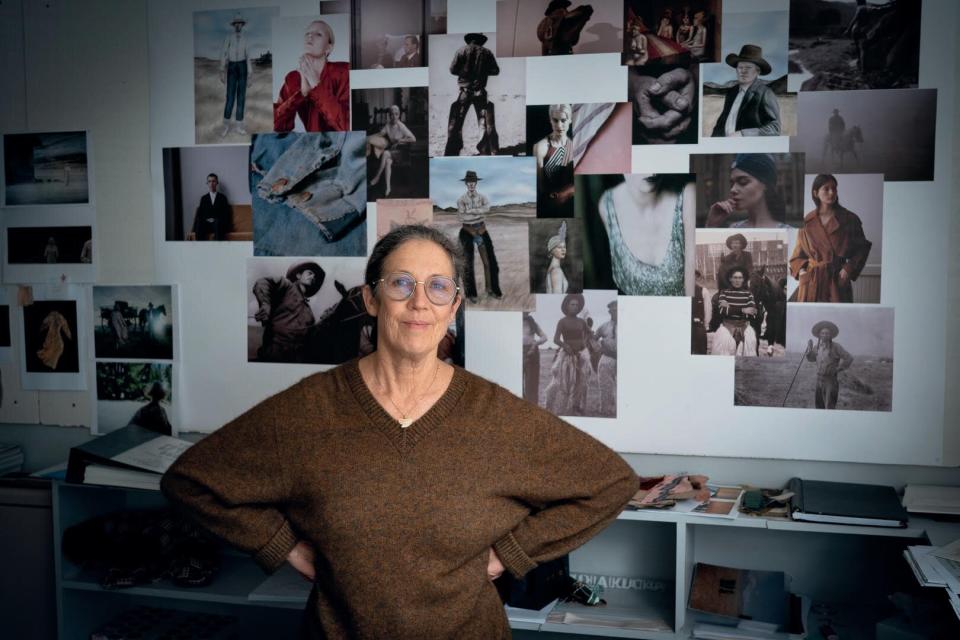
Netflix
"It's been really cool to have conversations with people, who really love the film and see it in its entirety — the nuances and the detail," she tells InStyle. "It's amazing to have feedback from people who get it."
Ahead, Cameron tells us more about her synergistic relationship with Dunst, the shopping spree that kickstarted the film's wardrobe, how filming in New Zealand impacted costuming, and — of course — the ranchers-in-the-river scenes that stirred up so much.
How did Slow West help prepare you for POTD?
It made me feel confident about what I could achieve with ranchwear. For Slow West, I set up a workroom with dye baths, breakdown, leather work and it was my first go experimenting with all the textural stuff. We also made most of the costumes, so once you know you've been able to do it, it gives you a huge advantage. With POTD, I launched straight into setting up dye baths, playing with salvaged denims, creating the palette, and making cowboy pieces.
What conversations did you have with director Jane Campion before filming and what were some elements of the period that you felt were most important to make authentic?
Jane speaks emotionally and mythically about the characters, which I love because it leaves a lot open to interpretation. She had spent time with Ari [Wegner, director of photography] in the landscape, so she knew how and where things might happen.
There was also a wonderful digital catalog the BBC funded, with images from the late 1800s to the '60s, including rodeo riders in the '20s. I pored over that because it gave me a feel of how people wore things. There was a lot of surprise — like images of rodeo riders wearing striped knits. That was something unexpected that Jane loved, so we replicated some pieces.
The shirtless ranch workers were also an unexpected element for some viewers and even rubbed some people up the wrong way. Tell us why that was important.
Jane talked about the cowboys as a chorus, which was super cool, because traditionally you imagine choruses as women in sparkly bikinis kicking up their legs onstage, even though that's not what they are in Greek theater. So, there was always an intention to take their clothes off and have them do their weekly wash in the river, and there's a delightful sense of Jane's humor in those scenes.
And, in terms of Phil's own homophobia about himself, there's this nice tension that happens when these younger guys are taking off their shirts.
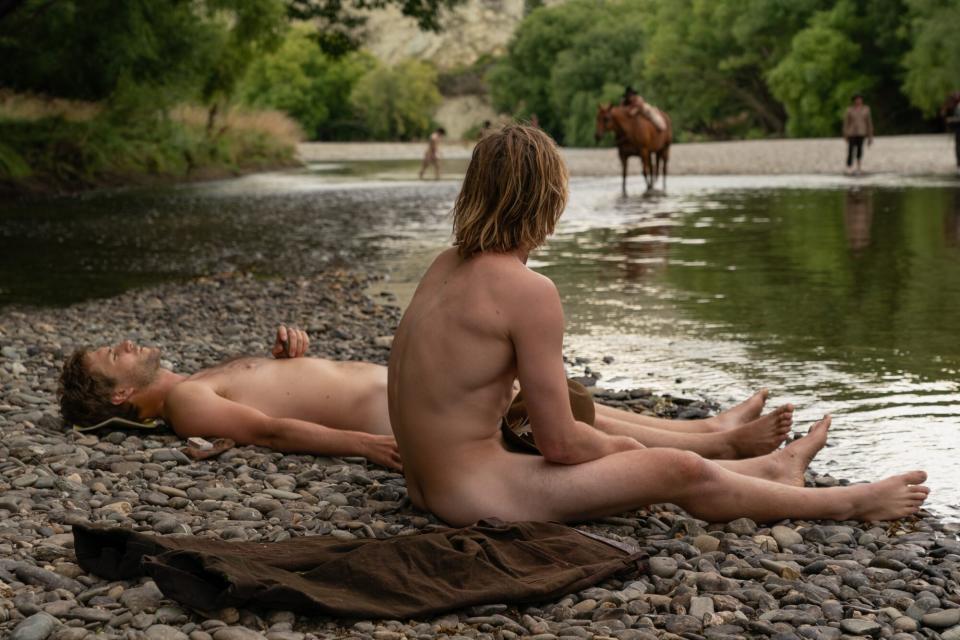
Netflix
Back to the clothed scenes — you made most of these outfits from scratch. Where did you start?
Emily Carter [assistant designer] and I went to LA, visiting costume hire places and vintage shops and just touching, holding, and absorbing all the textures and detail, particularly of the womenswear. It was about deepening our understanding so that back in the workroom we could create items that spoke to those original pieces, but with the freedom of interpretation.
We also went to the Melrose markets and shops where people remake 1920s-style jeans. We bought chaps, boots, and hats from LA, and I got fabric from this amazing shop, International Silks and Woolens. Then I went to costume hire places in Sydney and hired things for background people, and Rose's cream jersey that she wears when they dance on the hill.
And we just collected as much fabric as we could. Since the [global financial crisis of 2008], fabric options aren't what they used to be, and every time there's another world crisis it narrows again, so we collected everything we could and started cutting, sewing, and making.
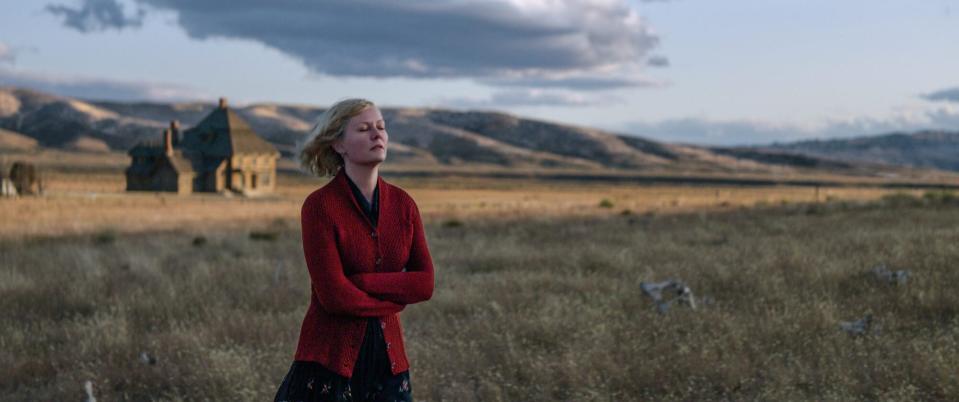
Netflix
How collaborative was your working relationship with Kirsten Dunst?
I've always admired her because I got the sense she's pretty rock-and-roll and she is! Rose's costumes are a journey. She had so many beats to hit, so I had a board with all her story days and all the possibilities. When she arrived in New Zealand, she looked at the boards and we talked through how her costuming needed to transition from the Red Mill into the Ranch House.
Then we did a lot of fittings — she was very generous with that. We were sketching on her body and working with the pattern cutter, stitcher, and Emily. We had conversations about what she liked and felt good in, and she was instantly responsive if something didn't feel right. It was a case of finding Rose in the room with Kirsten. I like to work like that, where you're not just sticking stuff on people and saying, "This is you."
She and I shared a sensibility, which made things easier. We have a shared appreciation of taste, which was symbiotic.
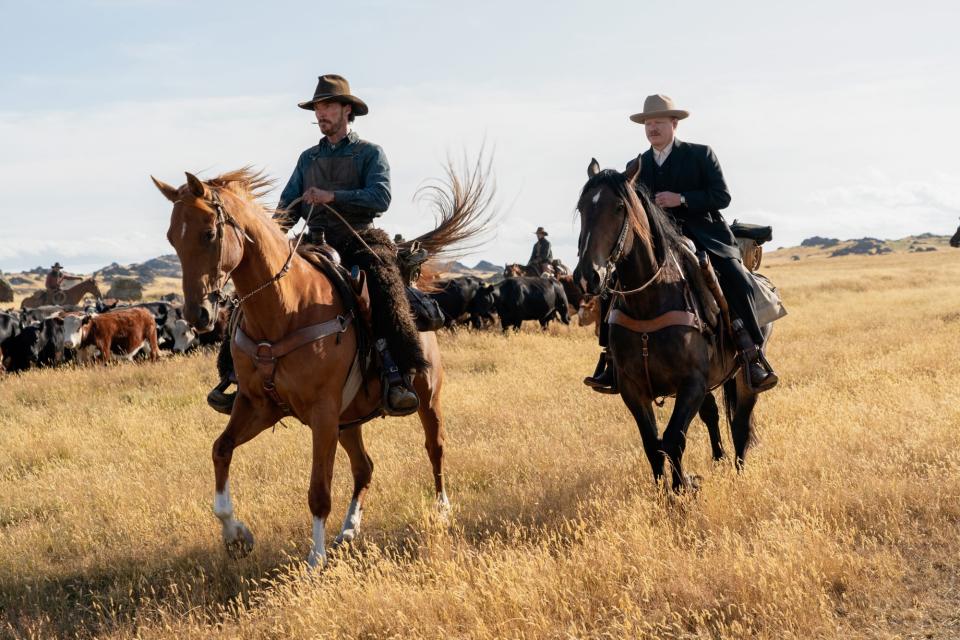
Netflix
How did filming in New Zealand impact wardrobe?
The range of choice is limited and there's stress about getting things in time if you've ordered internationally. But we have incredible pattern cutters here, like Ann Mockett, and amazing stitchers like Rachel Strong, who sewed so many silk Georgette dresses she'll probably never forgive me. So, we ransacked everything and everyone that was available!
We see some sheepskin in there with Phil's chaps. Were there any other elements of New Zealand fashion which weaved their way into costuming?
Emily went to great lengths for George's possum fur coat. It was a huge job getting the right possum skins and enough to make the coat since Jesse's tall, so we needed lots. Possum's something we're making a lot of woollen blends with and lots of fashion designers are now using it. Let it be known, possums are a huge pest here!
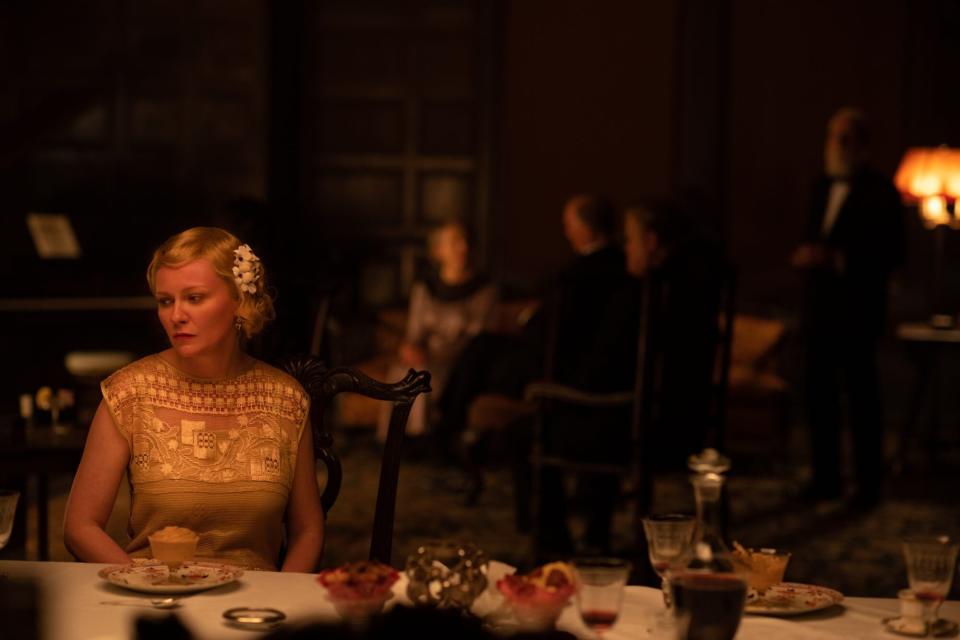
Netflix
I love the lengths you went to making Benedict's costumes appear sufficiently worn and tattered, like sanding, burning and grating items. Was there anything similar you did for Kirsten's costumes?
The best story about Rose's clothing is that the cream dress she wears to the dinner was something I found in a cupboard on-set. We'd made lots of beautiful dresses, but they weren't speaking to Jane. And I always wanted that costume to be monochromatic, so it was tricky finding a dress with the right amount of naivety that also made it feel like she's a little wrongly dressed, since it's such an awkward moment for her with sophisticated company.
Deirdre McKessar, the set dresser, had hired dresses from a vintage dealer and I came across that cream dress and went, "Wow." We took it apart, made some silk things to go underneath and re-bound it. It shows how you always have to be open to such occurrences, rather than having an ego and thinking, "I've made this, so must use it."
RELATED: The Oscar-Nomination Snubs We're Still Not Over
The film's nominated for 12 Oscars and while Best Costume Design isn't one of them, wardrobe's such an integral part of everything. Once the actors stepped into their costumes, how much did you see it enhance their performances?
It totally did. To see four main actors nominated for awards is amazing and their ability to fully become their character is part of a transformation that costume helps create. For me, costume's about leaving space for the actors. You want them to feel like they can walk in the shoes of the character and make it their own, but also leave room for them to do all the interior work they need to do.
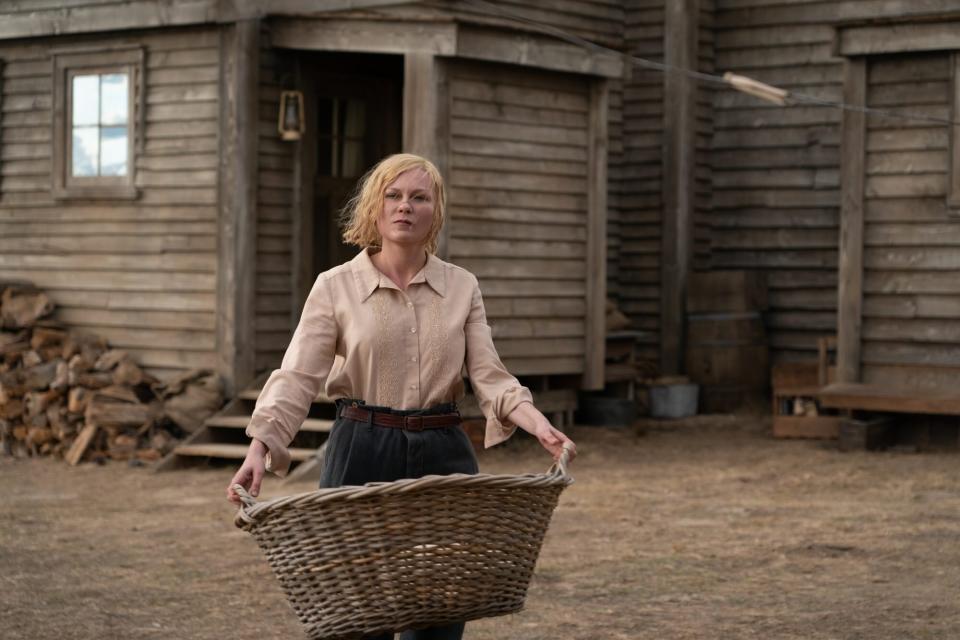
Netflix
The story touches on the onslaught of consumerism which was beginning at the time. What do you think about how far things like online shopping have progressed now?
We shot a scene which didn't make the cut of a postie turning up with orders for the cowboys. Thomas Savage talked about it in the book, because Phil's really dismissive of their excitement at in-laid boots and fringed shirts. There was an interesting parallel with what was happening back then with Sears Roebuck catalogs and the excitement of buying things you couldn't otherwise buy in a million years in Montana.
I personally think choice and convenience is overrated, and environmentally, it's terrible. How ludicrous to buy a whole lot of stuff, then return it — sometimes by airplane to the other side of the world. I'm very aware of that in New Zealand and I guess it's different in the Northern Hemisphere, but consumerism's out-of-control.
All these years after your mother taught you to sew, what does she think of POTD and the career you've developed from your love for sewing?
She's very proud. My mother was a modernist with a great passion for textiles and dressmaking. She read the book, then the script, so I was super-nervous about her seeing the film because she loved Rose so much and was like, "I can't wait to see what Rose wears here and there." But she loved it.

